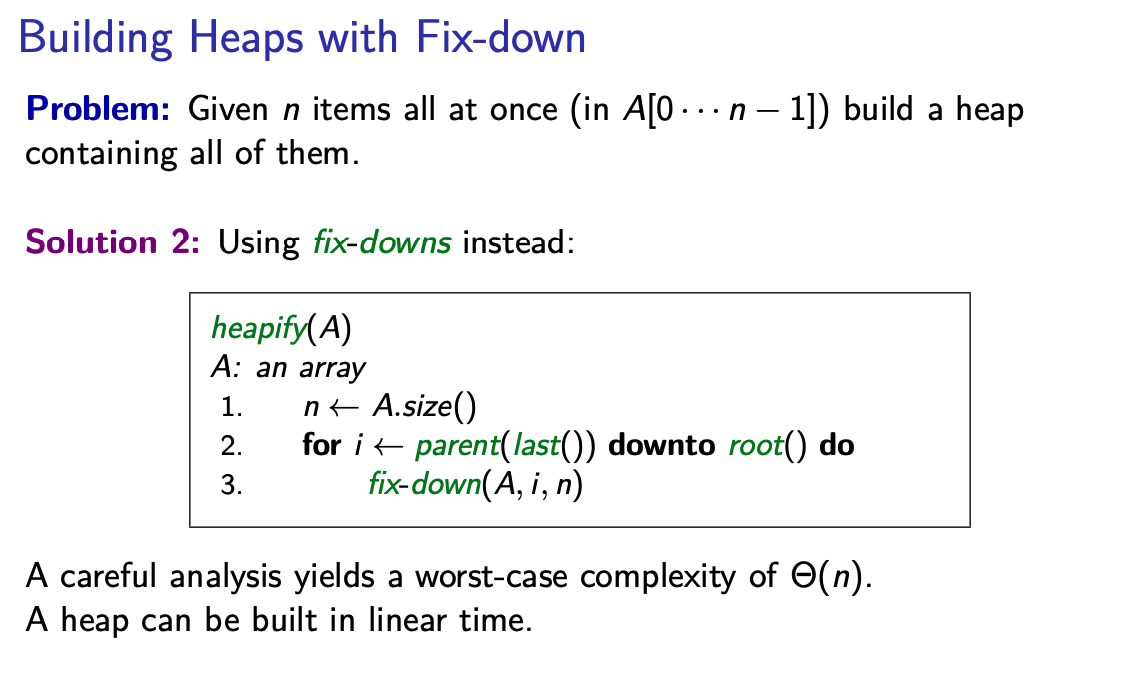Heapify
Heapify is the process of creating a heap data structure from a binary tree.
What blows my mind is that you can create a heap from an array in , and not . The reason for this is that we are starting from the last value of the heap in the array.

Used in Heap Sort.
Why is it O(n)?
-
Different levels of the heap contribute differently to the total cost:
- The bottom-most level of the heap (leaves) requires 0 sift-down operations, as they have no children.
- The second-to-last level (parents of the leaves) requires at most 1 sift-down.
- The third-to-last level (grandparents of the leaves) requires at most 2 sift-downs.
- And so on, until the root, which can require at most log(n) sift-downs.
-
Fewer nodes at higher levels:
- The number of nodes at each level decreases exponentially as you move up the heap. Specifically, half of the nodes are at the bottom-most level, a quarter are at the second-to-last level, an eighth are at the next level, and so on.
This gives rise to a summation that reflects the total work done during the heapify process:
Total work=∑i=0logn(nodes at level i×sift-down cost at level i)\text{Total work} = \sum_{i=0}^{\log n} \left( \text{nodes at level i} \times \text{sift-down cost at level i} \right)Total work=i=0∑logn(nodes at level i×sift-down cost at level i)
More concretely, we can express it as:
Where:
- is the number of nodes at level ,
- is the maximum number of sift-down operations needed at that level.
The summation evaluates to O(n).